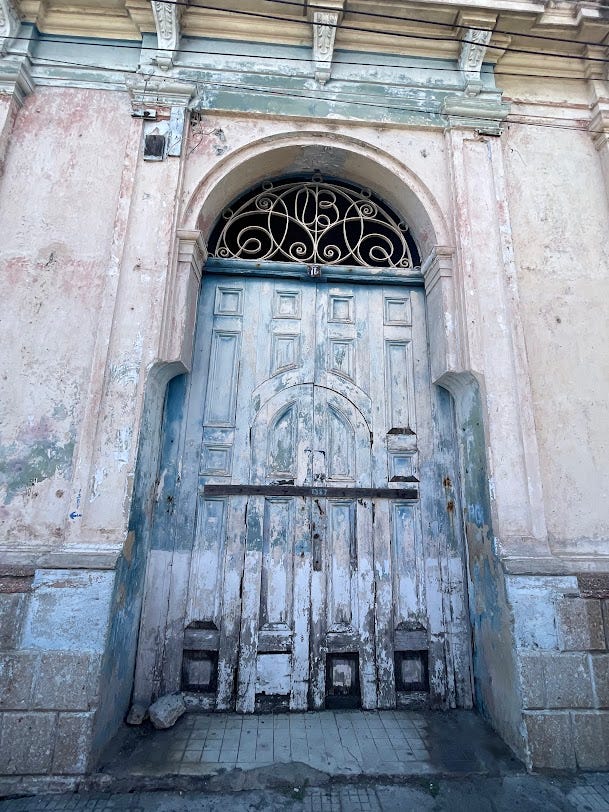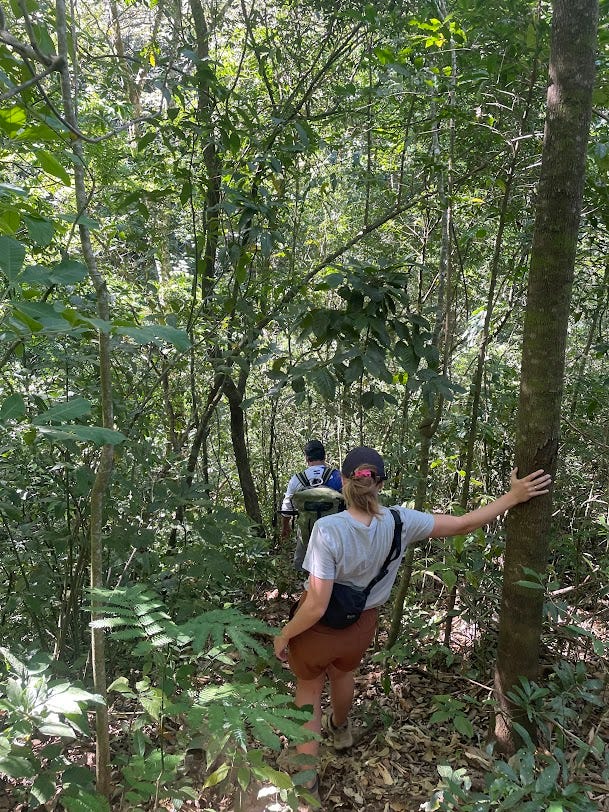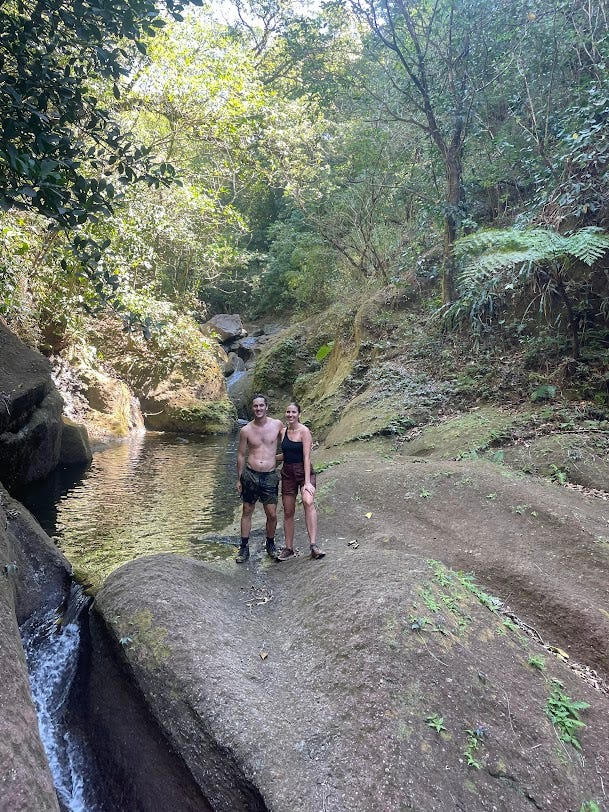#28: The Secret Waterfalls Tour, El Impossible National Park, El Salvador
An epic day out in a national park you've never heard of.
It’s a new day in El Salvador. After a decade-plus of civil war, and nearly thirty years of incremental economic and infrastructural progress (often disrupted by violent crime and government corruption), the country elected an “outsider” president who led a major crackdown on crime—over 50,000 arrested in a period of six months. It’s clear that this effort swept up many innocent people and has led to highly questionable (if not appalling) social justice outcomes… but it’s also clear that many citizens are relishing the newfound safety the crackdown has brought, and are filled with a newfound sense of optimism and pride.
One of those citizens, William, was our guide to the large and basically impenetrable El Impossible National Park. In America, when you hear national park, you rightfully expect facilities, maintained trails, and the like. But in many countries, it’s more of an economic designation—trails appear where locals tread, no signage required.
Before we take you over the (many) falls with us, let’s rewind. We wrapped up our stay near Santa Ana and moved on to the Ruta de las Flores region, specifically Concepción de Ataco (commonly known just as Ataco), where we settled in at Casa Pino, a small hotel that embodies the humble comfort of El Salvador’s nascent tourism industry. The ruta runs through a number of small towns, each with a unique vibe and flavor. The stretches of road in between are dotted with coffee plantations and the odd restaurant, including El Jardín de Celeste, where even I, who never drinks coffee, enjoyed a few sips of pure jungle brew.
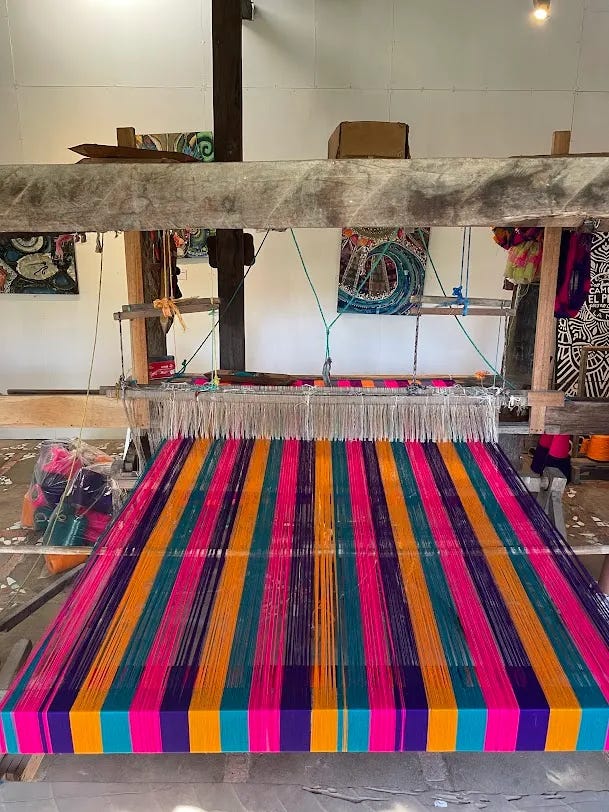

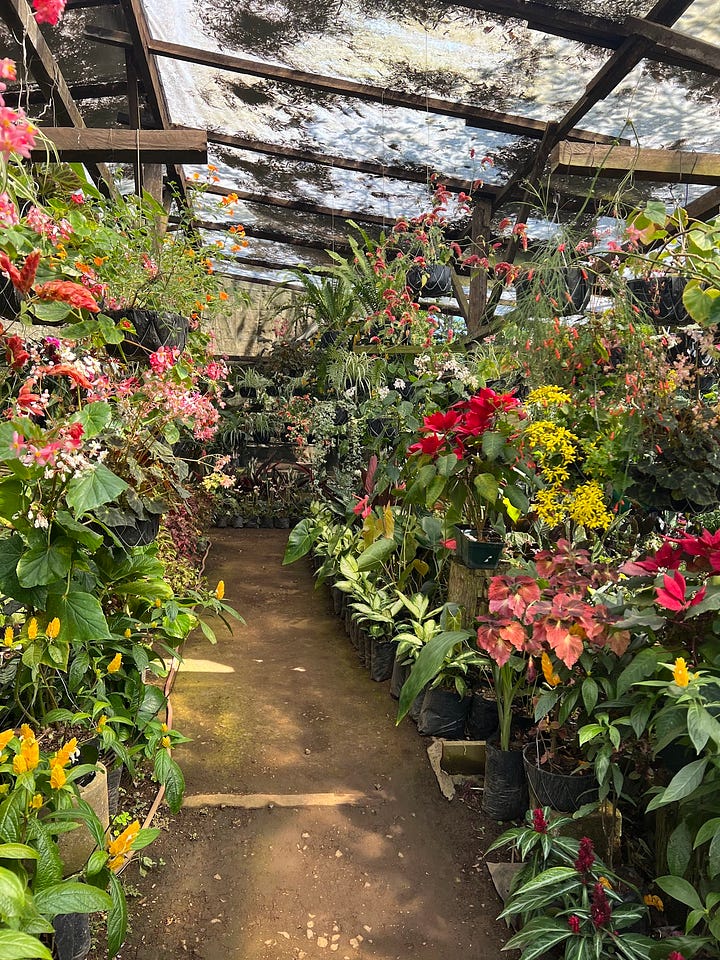
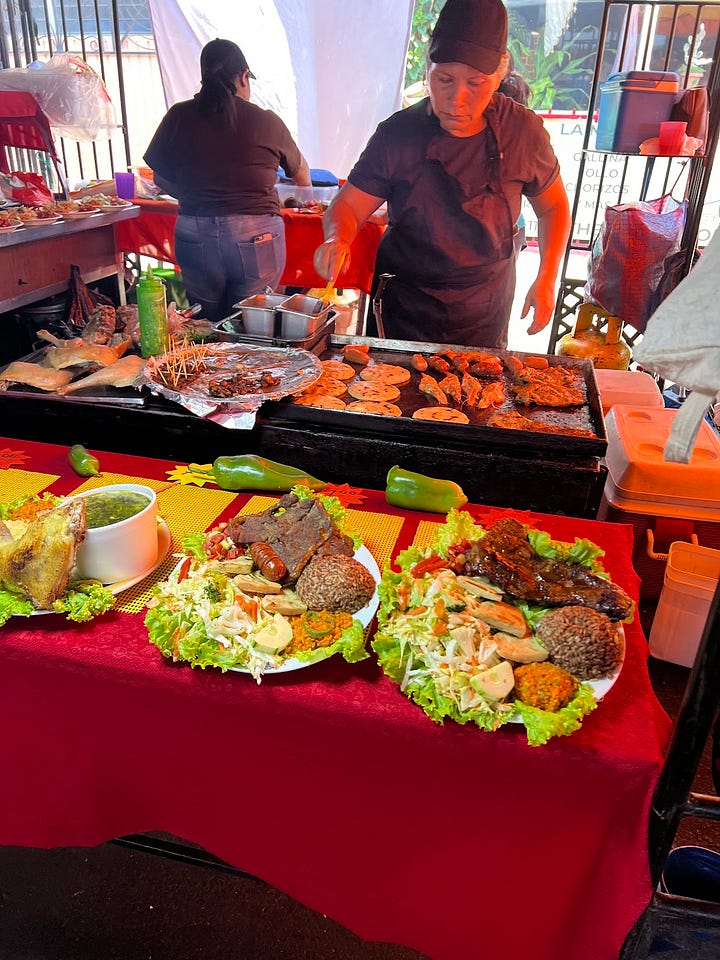
One of the towns—Juayua—is particularly known for its weekend food festival, which is honestly not a festival but rather a few blocks of street vendors hawking grilled meats and seafood, tamales, and the largest, spiciest micheladas you can imagine. It’s also the jumping off point for what may be the most popular tourist activity in the country, a hike known at Las Siete Cascadas (seven waterfalls, not to be mistaken with the secret waterfalls tour this post will eventually get to!)
Sometimes the tourist track exists for a reason—who doesn’t love traipsing through relatively gentle jungle tracks, climbing up flowing falls, and eventually plunging into a natural-ish pool filled with local kids? As with nearly all activities in ES, you have to go with a guide, who you find by asking on the street or finding a Whatsapp number on the internet. They tell you when and where, you arrive, hop in the pickup truck, and drive down an anonymous dirt road until you eventually just sort of walk into the jungle.
That’s how it went with William too. His one-man company, El Salvatours, arranged breakfast for us at a tiny cantine, and the afore-described pickup arrived bright and early. We were thrilled to find that a German couple we’d met at an earlier volcano hike, and then befriended in Juayua, would be our companions…except in the end, they ended up doing a different route with another guide. It was all a bit unclear, as these guys didn’t speak a lick of English, but boy could they handle a 20 year old pickup on a true Indiana Jones-style road. I’ve never seen potholes like this in my life, and this old truck ripped along like it was nothing. For those of us in the back, it was truly a white knuckle ride, with the only respite brief stops to pick up and drop off locals hitching a ride to a few small farms and homesteads on the edge of the wilderness.
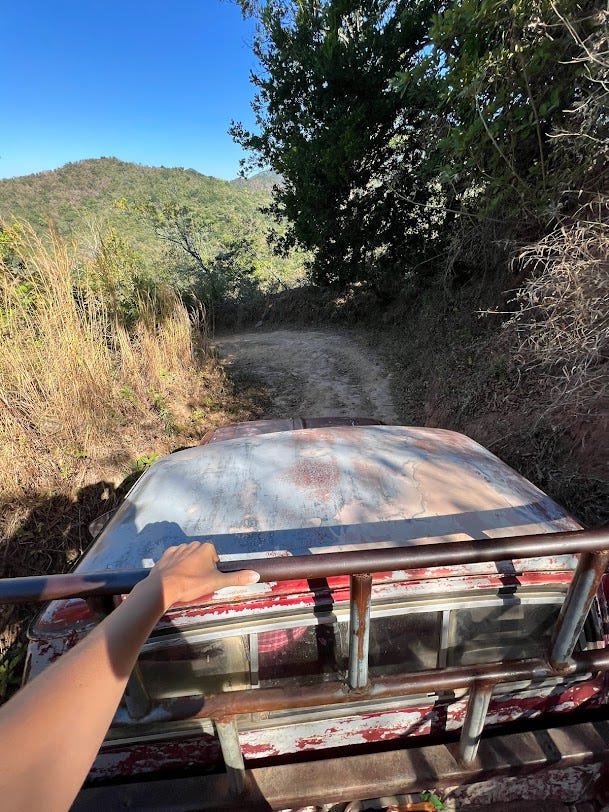
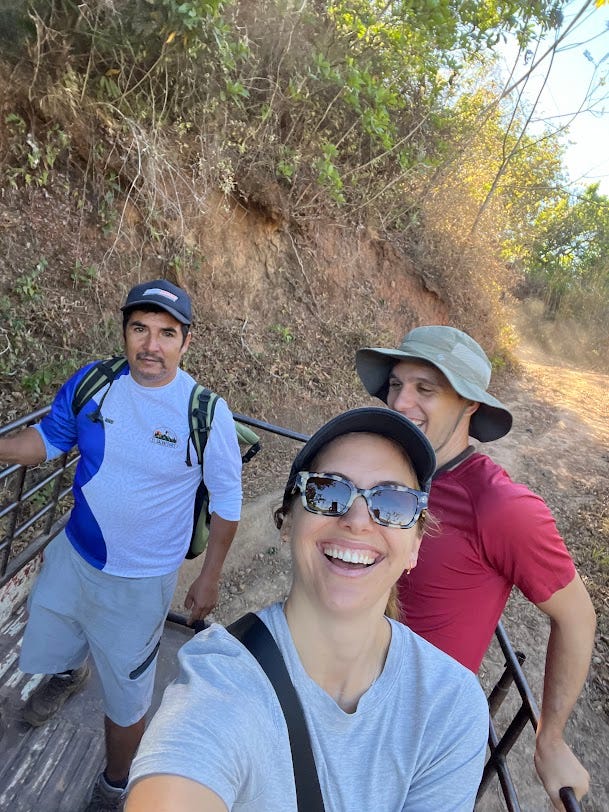
Eventually the road ended, we all hopped out, and William led us down a thin slippery trail that I think he’d blazed himself. The sun beat down as we made our way deeper into the valley, learning about medicinal and edible plants along the way (all in Spanish; we’re self taught and limited, but can get around).
The trail ended on a river bank, or, should I say, cliff. We knew the tour would involve some cliff jumping, but hadn’t realized just how much, nor how precarious some of the jumps would be. The first required landing in a very specific pocket of deep water without jumping too far out to avoid hitting the other bank. Fully clothed. Including hiking boots.
That’s how we spent our day—navigating the course of the river by jumping, wading, rock hopping, and certainly scrabbling. The highest leap was around 30 feet (into deep water), while the most precarious was 15-20…but with a major horizontal clearance and narrow landing area. William and I teamed up to lower Kira down with ropes, before I took a long time with my toes posed at the edge, wanting to jump but unable to move my legs. “I think you should take the ropes” said William. “When you’re scared, its dangerous.”
He’s right and gave good advice. But I looked around and thought, “We’re already out here, I’m sure I’ll be fine, and if I have kids, I’m not sure I’d take this kind of risk again.” You only live once! So I jumped.
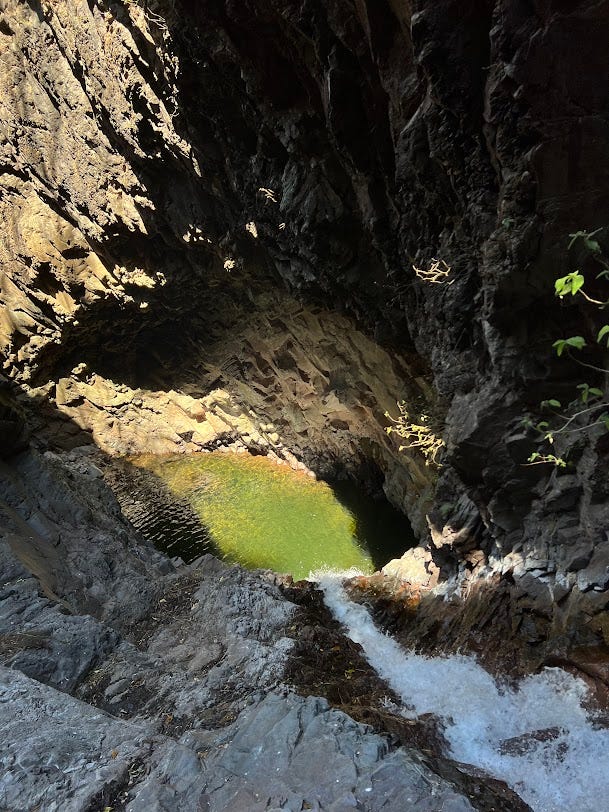
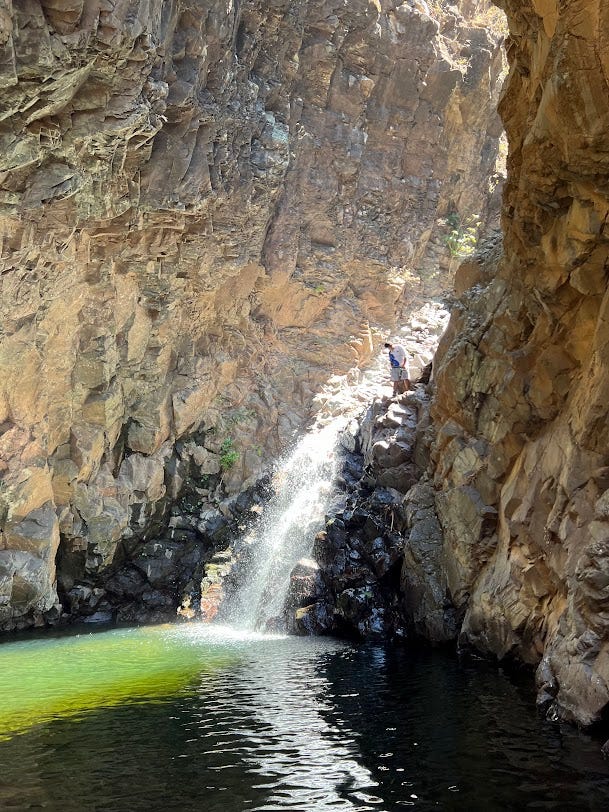
The valley was a gorgeous wild place, full of butterflies and bird song, in some ways reminiscent of the canyons around Los Angeles where I grew up, where smooth boulders dot green waters overhung with verdant brush. We saw a number of beautiful birds, including a gartered trogon and an Altamira Oriole, and had the time of our life (though the going was tough on the hike out, and the truck ride back was somehow more harrowing than our arrival.)
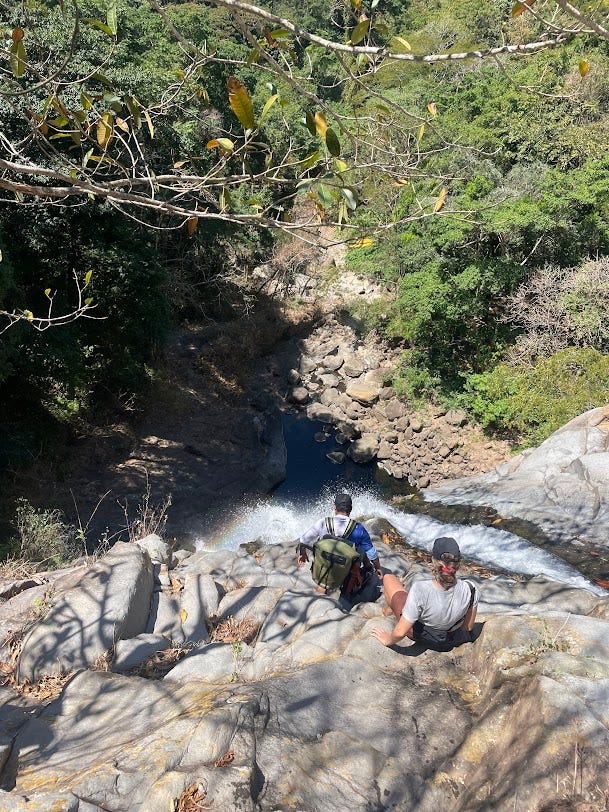
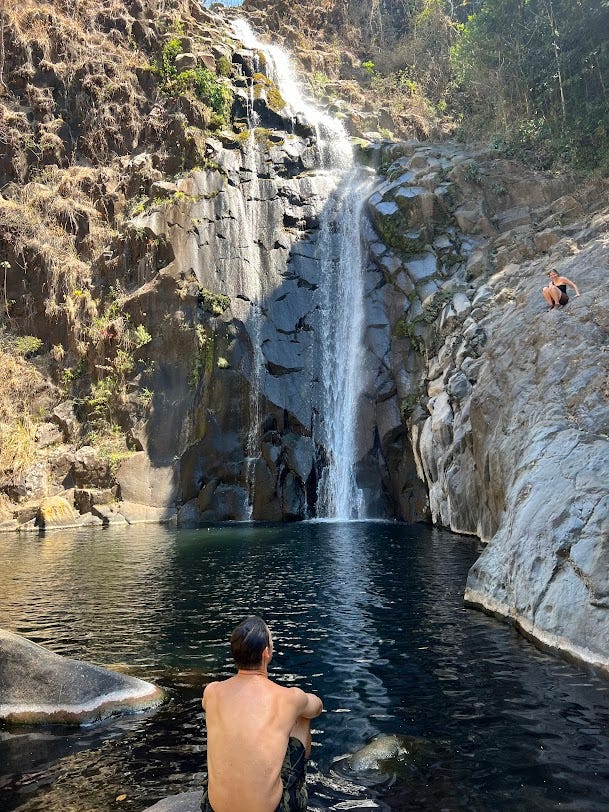
We strolled the streets of Ataco with our German friends, munching on fresh fruit and reflecting on how exactly it was that we all ended up there. Far from home, yet in the right place, making friends while pushing boundaries of independence. When you’re out there with no cell service facing risky choices, you have only yourself to rely on. El Salvador awaits. I’m glad to took the leap.
— Nicky and Kira
Next week → Alicia’s Cooking School, Santa Cruz La Laguna, Guatemala






